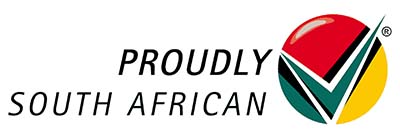Proper accounting for useful lives, depreciation, and impairments on fixed asset management software is crucial for maintaining accurate financial records and ensuring compliance with accounting standards.
Here’s a comprehensive guide to help you understand the process:
1. Identify Fixed Assets
2. Determine Useful Lives
3. Choose a Depreciation Method
4. Calculate Depreciation Expense
5. Track Accumulated Depreciation
6. Assess Impairment
7. Recognize Impairment Losses
8. Disclosures
In the beautiful landscape of South Africa, managing fixed assets is a crucial part of keeping your business in good shape.
After all, your equipment, vehicles, and property are valuable resources that need to be properly looked after.
We’re here to show you how to do it right with the help of fixed asset management software.
Key Facts
- Proper accounting for useful lives, depreciation, and impairments is essential for financial accuracy and compliance.
- Identifying fixed assets is the first step in asset management.
- Determining useful lives helps estimate how long assets will provide economic benefits.
- Choosing a depreciation method (e.g., straight-line, declining balance) allocates asset costs over time.
- Calculating depreciation expenses ensures proper financial records.
- Tracking accumulated depreciation shows the total depreciation expensed.
- Assessing impairment is crucial when assets’ fair value falls below their carrying value.
- Recognizing impairment losses is necessary and reflects the difference between fair value and carrying value.
- Disclosures in financial statements include fixed asset cost, accumulated depreciation, depreciation expense, and impairment losses.
- In South Africa, accurate asset management with user-friendly software and adherence to local regulations is vital for business success.
Proper Accounting For Useful Lives, Depreciation & Impairments
1. Identify Fixed Assets
The first step is to identify all the fixed assets that your company owns and uses for its operations.
Fixed assets are tangible assets that have a useful life of more than one year and are used to generate revenue or provide other economic benefits.
Examples of fixed assets include computers, furniture, equipment, and vehicles.
2. Determine Useful Lives
Once you have identified your fixed assets, you need to determine their useful lives.
The useful life is the estimated period over which an asset is expected to be used or provide economic benefits to the company.
Useful lives can vary depending on the type of asset, its expected usage, and industry standards.
3. Choose a Depreciation Method
Depreciation is the accounting method used to allocate the cost of a fixed asset over its useful life.
There are several different depreciation methods available, each with its own advantages and disadvantages.
Some common depreciation methods include:
- Straight-line depreciation: This method allocates an equal amount of depreciation expense to each year of the asset’s useful life.
- Declining balance depreciation: This method allocates a higher proportion of depreciation expense to the early years of the asset’s useful life.
- Units-of-production depreciation: This method allocates depreciation expense based on the number of units produced or the number of times the asset is used.
4. Calculate Depreciation Expense
Once you have chosen a depreciation method, you can calculate the depreciation expense for each year of the asset’s useful life.
The depreciation expense is the amount of the asset’s cost that is expensed in each accounting period.
5. Track Accumulated Depreciation
Accumulated depreciation is the total amount of depreciation expense that has been expensed for an asset over its life.
Accumulated depreciation is a contra-asset account that is subtracted from the asset’s acquisition cost to arrive at its net book value.
6. Assess Impairment
Impairment is a decrease in the fair value of a fixed asset below its carrying value.
Impairments can occur for a variety of reasons, such as obsolescence, technological advancements, or changes in market conditions.
7. Recognize Impairment Losses
If an impairment is identified, an impairment loss must be recognized in the accounting period in which the impairment is discovered.
The impairment loss is the difference between the asset’s fair value and its carrying value.
8. Disclosures
Companies are required to disclose certain information about their fixed assets and depreciation in their financial statements.
This information includes the total cost of fixed assets, accumulated depreciation, depreciation expense for the period, and any impairment losses.
Conclusion
In South Africa, getting your asset management right is crucial for the success of your business.
By using user-friendly fixed asset management software, adhering to South African regulations, and staying vigilant about useful lives, depreciation, and impairments, you’re on the right path.
Your assets will thank you, and your business will thrive. Get started today and watch your assets work for you like never before!





